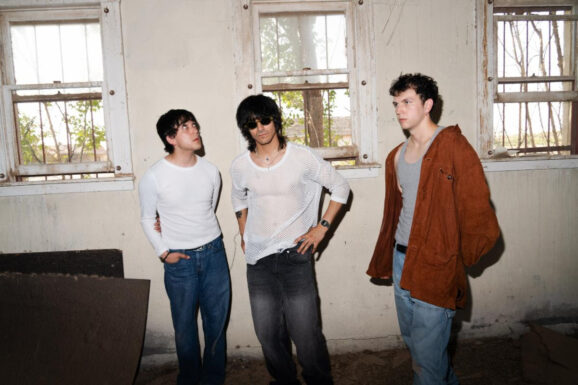[rating=8.00]
Great cinema, like all great art, forces us to confront the questions of the day. Sometimes these questions are concrete; the film, through its text and subtext asks us to consider social justice, morality, the rights and wrongs of war, for example. The great films burrow into our collective consciousness and touch upon a feeling or an idea we’ve all had, whether we realized it or not, putting a voice to the enduring problems and inquiries of an era. And then there’s The Room.
There are those who consider The Room a kind of masterpiece. “The Citizen Kane of bad movies,” said filmmaker and professor Ross Morin in an interview with Entertainment Weekly. Millions around the world seem to agree, given the film’s proliferation on the midnight movie circuit and continuing popularity. It’s a film that’s baffling in in its badness, offering, at face value, nothing artistically or intrinsically anything worthy of note or praise. Yet it endures. Why?
In its own way, The Room forces questions of its own, though its questions are more ethereal and, perhaps, accidental than truly great cinema. To witness The Room is to be confronted with the question of the nature of art itself, and to wonder if intent or reception is more important in determining the merit of any particular piece. Tommy Wiseau, the madman behind the cult classic, intended to make a heartrending drama that peeled back the veil on the human condition; he succeeded in accidentally making a film now renowned for its accidental hilarity. It’s arguably one of the greatest success-fails of all time, and now that’s explored in a movie of its own.
The Disaster Artist is one of the better movies about movies to come out in quite some time. It examines that subtext that fans of The Room have been overreading for years, bringing out the themes of the nature of art and the tricky balance between intent and reception. It’s also a heartfelt exploration of the artistic process and an earnest love letter to a film and filmmaker who got it so wrong he accidentally got it right.
James Franco pulls double duty, directing The Disaster Artist and starring as Wiseau, the filmmaker of enigmatic origin whose baffling vision propelled The Room to its dubious status as classic. Based on the book by the same name by Greg Sestero, who co-starred in The Room, and is played here by Dave Franco, The Disaster Artist is one of the funniest surprises of the season.
Though far from perfect—Sestero’s book remains the best, most proper telling of the story of The Room—Franco appears to have come into his own as both a director and an actor, something he’s been threatening to do for years now. His career is peppered with bizarre turns and twists (which might be befitting of a movie of their own; Tommy, are you listening?) but here he utilizes all the skills and powers he’s been developing for at least the last decade.
While the script, penned by Scott Neustadter and Michael H. Weber (The Fault in Our Stars, 500 Days of Summer) rushes through and condenses much of the nuance that made Sestero’s book (co-written by Tom Bissell) such a delightful and wonderful read, the Franco brothers approach the subject with such earnest appreciation that it’s hard not to fall under the film’s bizarre spell.
The making of The Room is too wild and complex to get into here, and it’s very nearly too much to be contained within a single film. Wiseau is a man of such peculiarity and his vision is so wildly incomprehensible that a mini-series might have been a better format to get at the meat of the story. Still, what Franco manages to do is get at the heart of the story, which gives audiences a well-proportioned taste of the absurdity of working on The Room.
While the movie makes Wiseau out to be a more sympathetic character than Sestero’s book (the book is about as unflattering a portrait as anyone has ever painted of a friend), Franco manages to capture much of the frenetic weirdness on which Wiseau has built his legacy. This is a man whose ideas about what is and isn’t good film are based on wild misinterpretations of what good means, which leads to much of the supposed charm of The Room. Wiseau is so wrong in his beliefs that they’re hilarious to the rest of us, but he’s so earnest in his execution that it’s hard not to find it all endearing.
Franco’s portrayal leans on more on the endearingness of Wiseau than the rampant, if ineffectual, megalomania presented in the book, but that allows audiences an interesting doorway to the world of The Room that cuts to the heart of why that awful, awful film is so revered (ironically and unironically) even 15 years after its unimpressive debut.
Late in the film, as Franco’s Wiseau laments the laughter from the audience at The Room’s premiere, he’s brought around by Sestero, who implores him to look at the joy the film is inducing in its audience. While that scene is more of a metaphor for the reception of the film after its initial release, it serves as a thematic hammer to the questions that The Disaster Artist (and, more indirectly, The Room itself) forces us to confront.
Wiseau may have intended to make a film that awes us with the dramatic interpretation of perils of the human condition, but he succeeded, instead, in making a film that delights with its accidental comedy. Is that success or failure? Can one find one in the other? Is there a difference? While making The Room, Wiseau foolishly believed he was destined for Oscar glory. With The Disaster Artist he may, though again, indirectly, finally get his wish.
The Disaster Artist is now playing in New York and Los Angeles; it opens everywhere on December 8.









